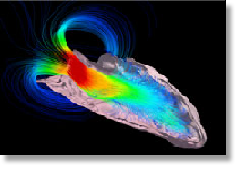Medical Imaging Informatics
| |
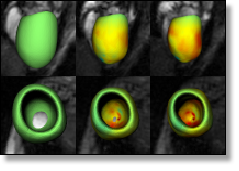 |
Modeling: Sparse Deformable Models for Cardiac Motion Analysis
We introduce a new family of deformable models, using Laplacian coordinates as the internal force
and sparsity constraints as the external force. Benefited from the sparsity
techniques, these deformable models are able to handle outliers or gross errors during the deformation.
This is an extension of my thesis work on sparse shape representation.
It is applied to the analysis of cardiac motion, using tagged Magnetic Resonance Imaging.
-
Sparse Deformable Models with Application to Cardiac Motion Analysis.
[PDF]
Yang Yu, Shaoting Zhang*, Junzhou Huang, Dimitris Metaxas, Leon Axel.
IPMI, 2013. * Corresponding author
|
| |
 |
Segmentation: Robust Shape Prior via Sparse Shape Composition
This project is a collaboration with
Siemens HealthCare (Malvern, PA). We propose a novel shape prior method to do shape
inference and refinement, based on sparse representations. The method can robustly handle
outliers, model complex shape variations, and preserve shape details. It is
successfully applied to locate 2D lung in X-ray and segment 3D
liver in CT.
-
Deformable Segmentation via Sparse Shape Representation.
[PDF]
[Journal version]
[Project]
[Python code for shape prior modeling]
Shaoting Zhang, Yiqiang Zhan, Maneesh Dewan, Junzhou Huang, Dimitris Metaxas and Xiang Zhou.
MICCAI, 2011. MICCAI Young Scientist Award Finalist.
Top 25 hottest articles in Medical Image Analysis in 2012 full year (journal version)
|
|
|
| |
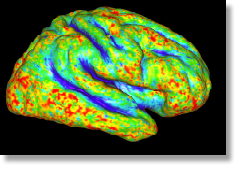 |
Segmentation: Modeling Region Statistics for Robust Segmentation
This project is a collaboration with IDEA lab (Lehigh
University, PA) and Brookhaven National
Lab (Upton, NY). A 3D deformable model is proposed to
effectively segment 3D medical images. Deformations of the model
are derived from a linear system that encodes external forces from
the Region of Interest (ROI). We also use Laplacian driven model
and hierarchical shape prior information to improve its
performance. (Please refer to
Tian Shen's homepage for more information)
|
|
| |
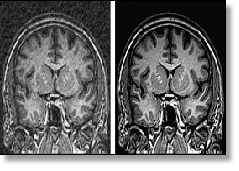 |
Compressed sensing: Optimization of Large Scale Inverse Problems
To minimize a smooth convex function regularized by the mixture
of prior models, we decompose it into multiple simpler subproblems.
Then these subproblems are efficiently solved by existing
techniques in parallel. The result of the original problem is
obtained from the weighted average of solutions of subproblems in
an iterative framework. This algorithm is applied to efficiently
solve the MR imaging reconstruction
-
Efficient MR Image Reconstruction for Compressed MR Imaging.
[PDF]
[Project]
[Code, Matlab]
Junzhou Huang, Shaoting Zhang and Dimitris Metaxas.
MICCAI, 2010.
MICCAI Young Scientist Award, oral presentation
|
|
Computer Vision and Graphics
| |
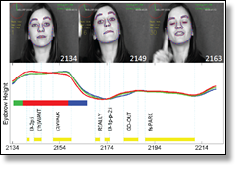 |
Nonverbal Communication Computing: Robust Face Tracking and ASL
Understanding how people exploit nonverbal aspects of their communication to
coordinate their activities and social relationships is a fundamental scientific challenge.
To analyze such events automatically,
we have developed a real-time and pose-free 3D face tracker, and use it for fatigue detection, American
Sign Language recognition, emotion analysis, etc.
-
A Review of Motion Analysis Methods for Human Nonverbal Communication Computing.
[PDF],
Dimitris Metaxas, Shaoting Zhang.
IVC, 2013.
-
Pose-free Facial Landmark Fitting via Optimized Part Mixtures and Deformable Shape Model.
[PDF],
Xiang Yu, Junzhou Huang, Shaoting Zhang, Wang Yan, Dimitris Metaxas.
ICCV, 2013.
|
|
| |
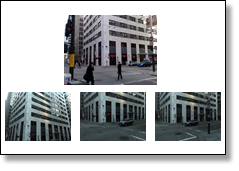 |
Visual Search: Query Specific Fusion for Large-Scale Retrieval
This project is a collaboration with
NEC Lab America (Department of Media Analytics) (Cupertino, CA).
We focus on the large-scale image retrieval problem. Traditional methods
either use vocabulary tree for local features (e.g., SIFT) or hashing code
for holistic features (e.g., GIST). It is hard to combine them
because the feature characteristics and the algorithmic procedures
are dramatically different. We propose a graph-based query-specific fusion approach,
which is unsupervised and has few parameters. We
have achieved state-of-the-art performance on several public datasets.
-
Query Specific Fusion for Image Retrieval.
[PDF]
[Project]
[Code]
[Online demo]
Shaoting Zhang, Ming Yang, Timothee Cour, Kai Yu, Dimitris Metaxas.
ECCV, 2012.
|
| |
 |
Visual Search: Image Annotation and Retrieval using Group Sparsity
We proposed a regularization based feature selection algorithm
to leverage both the sparsity and clustering properties of
features, and incorporate it into the image annotation task. The
algorithm was tested on Corel5K and IAPR TC12. Some Matlab code is
available here: [annotation
code].
-
Automatic Image Annotation Using Group Sparsity.
[PDF]
[Slides]
[Code]
Shaoting Zhang, Junzhou Huang, Yuchi Huang, Yang Yu, Hongsheng Li and Dimitris Metaxas.
CVPR, 2010. Oral presentation.
|
|
| |
 |
Deformable Models: Mesh Editing and Geometry Processing
This course project extended Prof. Sorkine's
As-Rigid-As-Possible Surface Modeling by considering skeleton
information. ARAP surface modeling can recover rotations and
preserve edge lengths. In our method, the volume is also roughly
kept by leveraging the skeleton information. I wrote this demo (10
KLOC) with C++, OpenGL, Qt, OpenMesh, Newmat and TAUCS: [code],
[video].
We also developed multiresolution technique to accelerate the
deformation process.
-
Skeleton Based As-Rigid-As-Possible Volume Modeling.
[PDF]
[Slides]
[Code]
Shaoting Zhang, Andrew Nealen and Dimitris Metaxas.
EG, 2010. (short paper, oral presentation)
|
|
| |
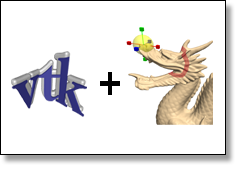 |
Deformable Models: vtkModeling, A Deformation Toolkit via VTK
vtkModeling is based on Visualization ToolKit 5.0. Basically it
is a collection of deformation algorithms, like Laplacian Surface
Editing, Moving Least Square, Mass Spring System, Meshless Model,
etc. I implemented them by extending a VTK class (vtkAlgorithm).
Thus all classes can be easily used as VTK filters. The source code
is avaiable at sourceforge: [vtkModeling_code],
and a technical report: [How
to extend VTK]. We used these algorithms to reconstruct the
surface of sparse tMRI and initialize a meshless deformable model:
[meshless
deformation].
-
LV Surface Reconstruction From Sparse tMRI Using Laplacian Surface Deformation and Optimization.
[PDF]
[Code_report]
[Code]
Shaoting Zhang, Xiaoxu Wang, Dimitris Metaxas, Ting Chen and Leon Axel.
ISBI, 2009.
|
|
| |
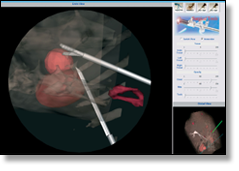 |
Deformable Models: Surgical Simulation and Virtual Reality
We developed a virtual reality system to simulate the surgery in the endoscopy
environment, which includes deformable models, collision detection
and response, cutting and force feedback technique. I was the team
leader of this project, and mainly focused on deformable models and
collision response. These algorithms were implemented in C++ and
wxPython. PHANTOM Desktop was used as the haptic device. A compact
version is available in sourceforge (deformable model, collision
detection and response, and simulator): [Simulator_code].
-
Real-Time Simulation of Deformable Soft Tissue Based on Mass-Spring and Medial Representation.
Shaoting Zhang, Lixu Gu, Pengfei Huang, Jianfeng Xu.
CVBIA (ICCV Workshop), 2005.
|
|


